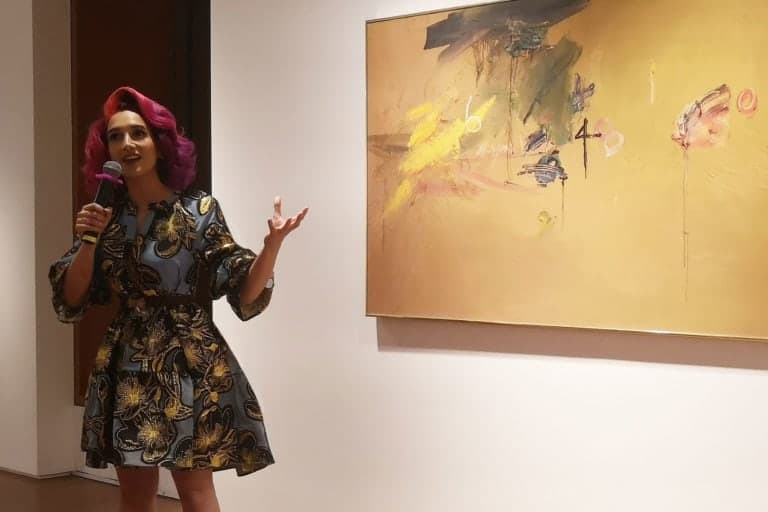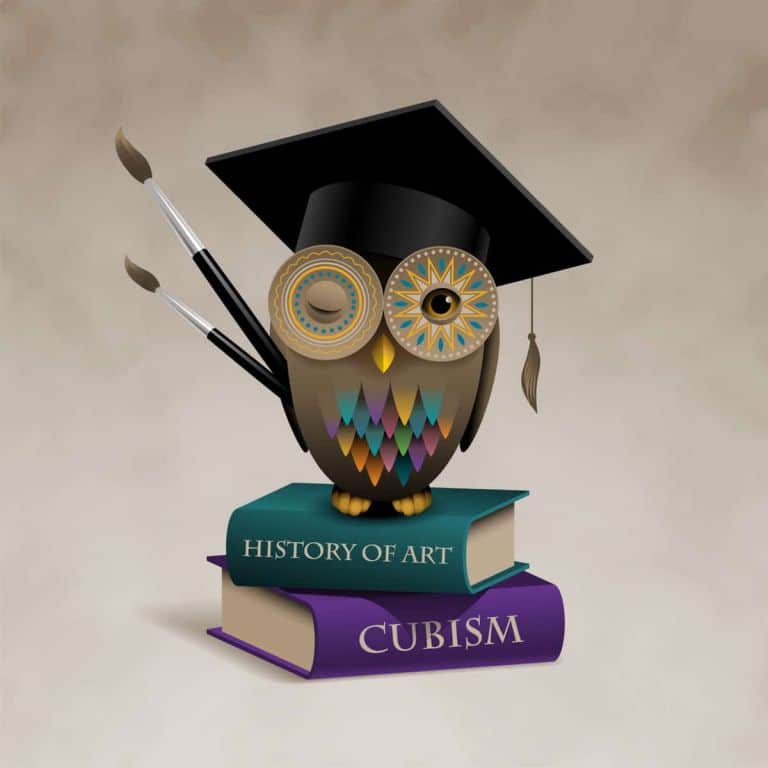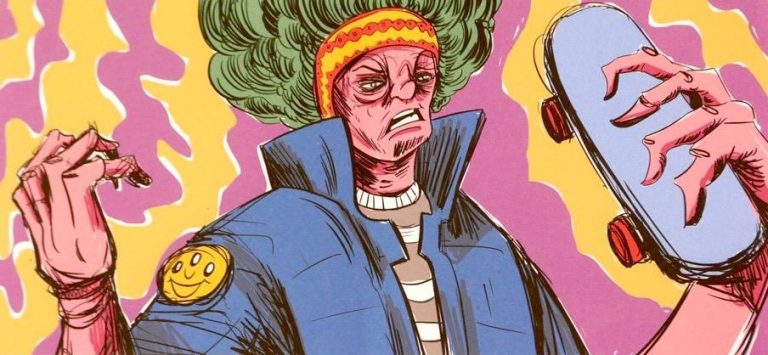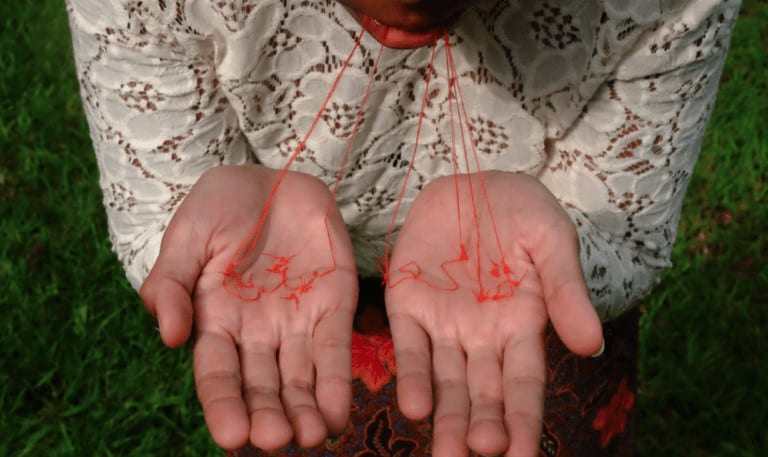It’s Saturday cocktail hour and I’m standing outside the National Gallery of Indonesia—cradled by the sultry evening sun. After a full day of talks, guided tours, and fun little side convos about art and gender politics, I’m ready to weave my way home through the dinner-going troops of Jakarta’s well-dressed urbanites.
I’ve got a brand new book in tow.
A bus pulls up to rescue me from the beads of sweat soon to pool above my brow.
Glancing back at the crowds of men who will wait for the next vehicle, I board a cool and empty, creamy-rose-coloured Transjakarta coach—one of the city’s many women-only buses.
How fitting. I snag a seat, reach for my new book, and crack open the brilliantly bright pink spine of Carla Bianpoen’s latest work, Into the Future: Indonesian Women Artists.
Launched in February, in cooperation with Cemara Enam Foundation, Bianpoen’s collection of essays contextualises the lives of twenty-one young and emerging contemporary artists who are creating “out of the box” works from places such as Jakarta, Yogyakarta, and Bandung.
The artists featured are Andrita Yuniza Orbandi, Ayu Arista Murti, Cecilia Patricia Untario, Dita Gambiro, Elia Nurvista, Erika Ernawan, Etza Meisyara, Fika Ria Santika, Irene Agrivina, Kinez Riza, Maharani Mancanagara, Maradita Sutantio, Natasha Tontey, Octora, Prilla Tanya, Restu Ratnaningtyas, Sanchia Tryphosa Hamidjaja, Syagini Ratna Wulan, Tara Astari Kasenda, Theresia Agustina Sitompul, and Yaya Sung.
In the spirit of moving towards a more informed and inclusive Indonesian contemporary art scene, the launch of this book took place alongside an identically- named exhibition at the National Gallery of Indonesia which opened on February 26th and ran till March 16th. Featuring solely women artists, and curated by Carla Bianpoen and Citra Smara Dewi, the show stood as a companion to Bianpoen’s book. A full schedule of parallel events, from presentations to panel discussions, and curatorial tours were organized in collaboration with the Creative Economy Agency (Bekraf).
Every event I attended was packed.
These female artists, according to Bianpoen and her team of scholars, “signify the spirit of the present time and the coming era.”
“They represent the art of now,” she explained as she directed us around the gallery floor during a curatorial tour.
On display were a wide variety of interdisciplinary works, wrestling with concepts as varied as those of cultural identity and discrimination, the protection of freedom, food insecurity, historical injustices, absent sex education and post-human alternative realities. Strikingly, the exhibition revealed interplays between science and technology, and the material components of domestic life—paying homage women’s historical roles (a major theme of the book).
The show was not so much an exposition as it was a bold statement with the young artists in the room standing on the shoulders of earlier generations. I couldn’t help but think of initiatives like the Indonesian Women’s Movement (Gerwani) which were restricted and socially prosecuted by a very vindictive type of censorship after the Thirtieth of September Movement, less than a century ago.
Would they have been able to fill an exhibition space with beautiful, self-blown, phallic shaped glass tubes?
In her installation, Silent 2, Cecilia Patricia Untario did just that.
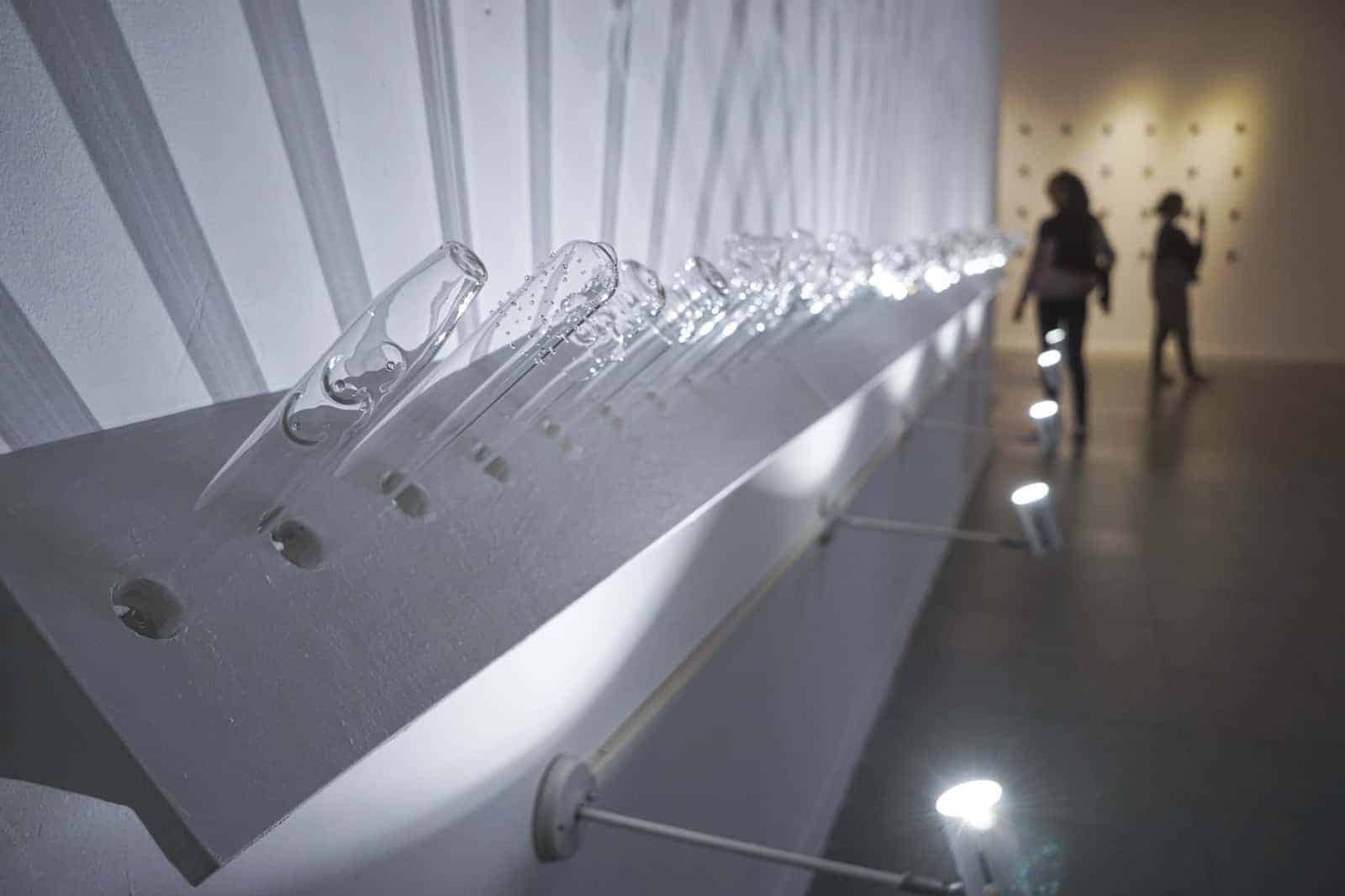
Recognized as the only female contemporary glass artist in Indonesia, Untario lined up sixty carefully blown glass cylinders (resembling condoms) to spark a conversation about the importance of early sex education and its broad absence in Indonesian society.
Equally provocative was Natasha Tontey’s From Pest to Power, a work which investigated gender through the life of a genderless cockroach in a post-human alternative reality—or for Tontey perhaps, another potential future. Her video featured gender-fluid, distorted characters who flirt with a type of exhibitionism that confronts the great debate of pornography in the arts—a tough topic in Indonesia.
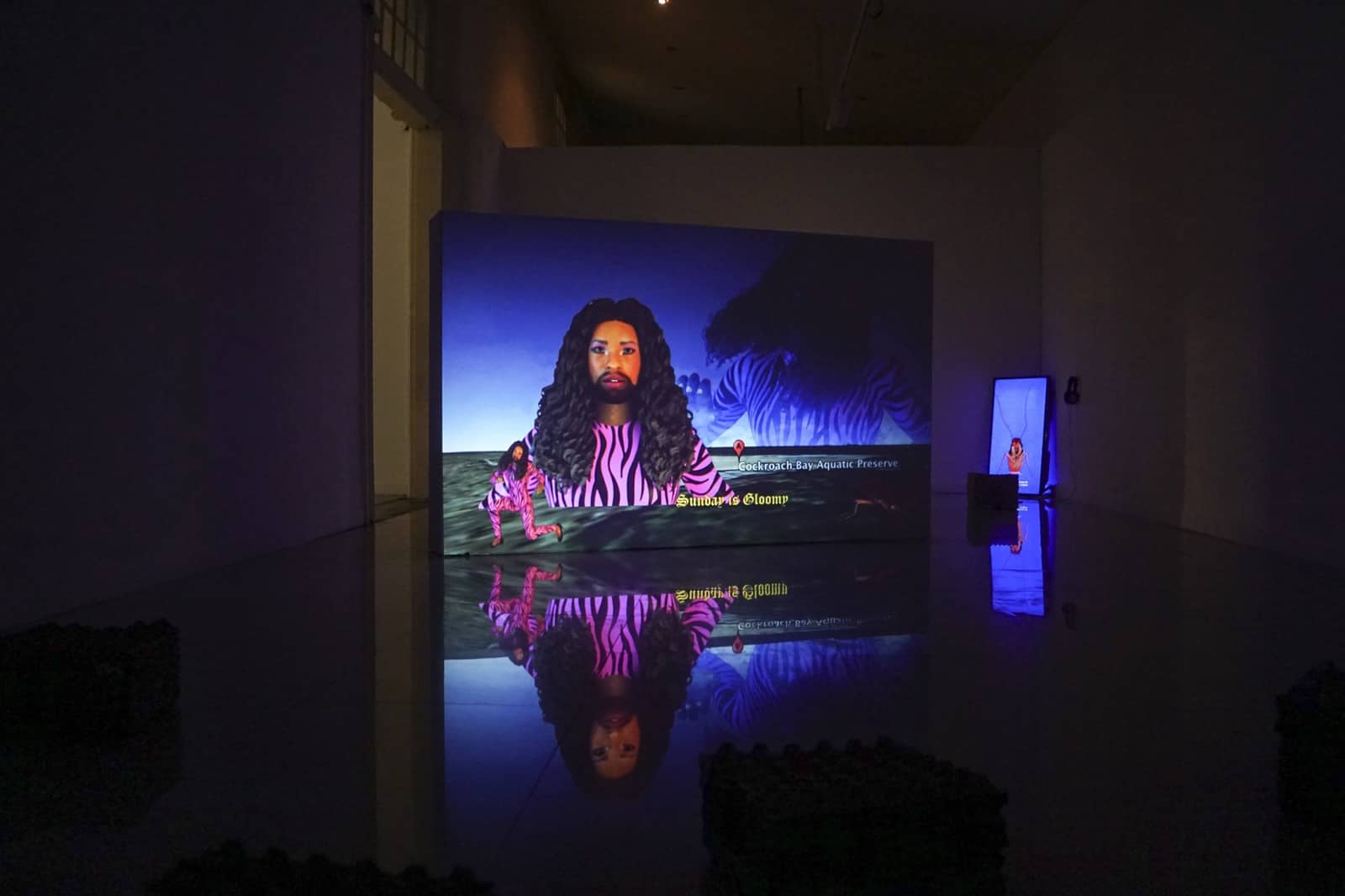
Irene Agrivina, on the other hand, grappled with the fashion industry—educating us on the harmful pollutants found in most garments. To tackle the issue in her work Tajin, she engaged with chemistry and biology to create protective underwear for women. It was a masterful experiment that combined porridge as cellulose, bacteria, acetobacter, xylinium, and vaginal flora by using open source technology—all on display as little boxes containing test tubes and Petri dishes.
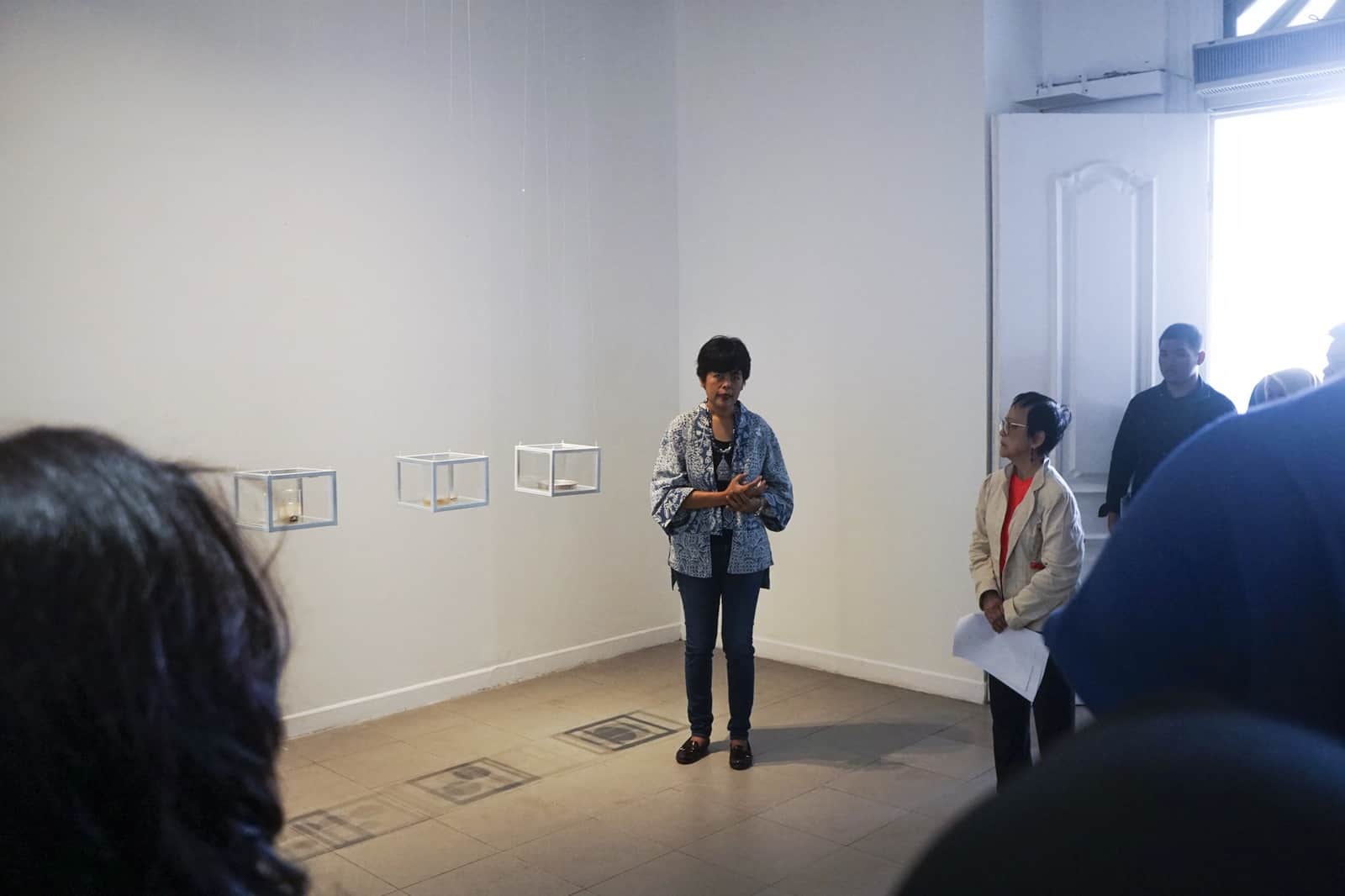
With the exhibition now closed, and the works uninstalled—it’s important to consider the legacy that Carla Bianpoen’s book will leave behind as we gaze onward towards the future.
Certainly not her first contribution to Indonesian art scholarship (in 2007 she co-authored Indonesian Women Artists: The Curtain Opens in collaboration with Farah Wardani and Wulan Dirgantoro), Bianpoen—two time curator of the Indonesian pavilion for the Venice Biennale, felt compelled again, to update us on recent Indonesian art history—a discourse that seriously lacks female-centric narratives.
However, this is not to say that measures have not been put in place to boost the volume of women acknowledged within the Indonesian art scene. To recap, the preceding year alone has seen several exhibitions focused on Indonesian women artists—both regionally and internationally.
In June 2018, Gajah Gallery presented Medium at Play, a multi-dimensional show that gathered, among others, video, performance, and experimental fashion—curated by Dr Wulan Diangtoro and Singapore’s ceramic and performance guru, Jason Lim.
In September 2018, Bale Banjar Sangkring gave us Reracik, a participatory show in which each member of the artist-mother collective, Bumbon Project, partnered in collaboration with another artist of a distinctly different medium. It brought innovation, laughs, and maybe even some tears to audiences and was curated by Arham Rahman.
Santy Saptari put several Indonesian women on the international stage for #Perempuan, part of Mapping Melbourne in December 2018. In collaboration with Project 11, the show offered a more intimate and perhaps politically charged examination of what it means to be a woman in contemporary Indonesia.
Finally, following right behind the launch of Carla Bianpoen’s book—as though in direct response to it, the Jakarta based creative consultancy, ISA Art Advisory announced Reinventing Eve. This was a collaboration with CAN’s Gallery, in which fourteen women artists were showcased, bringing us to a grand total of over thirty-five Indonesian women artists highlighted in Jakarta in March 2019 alone.
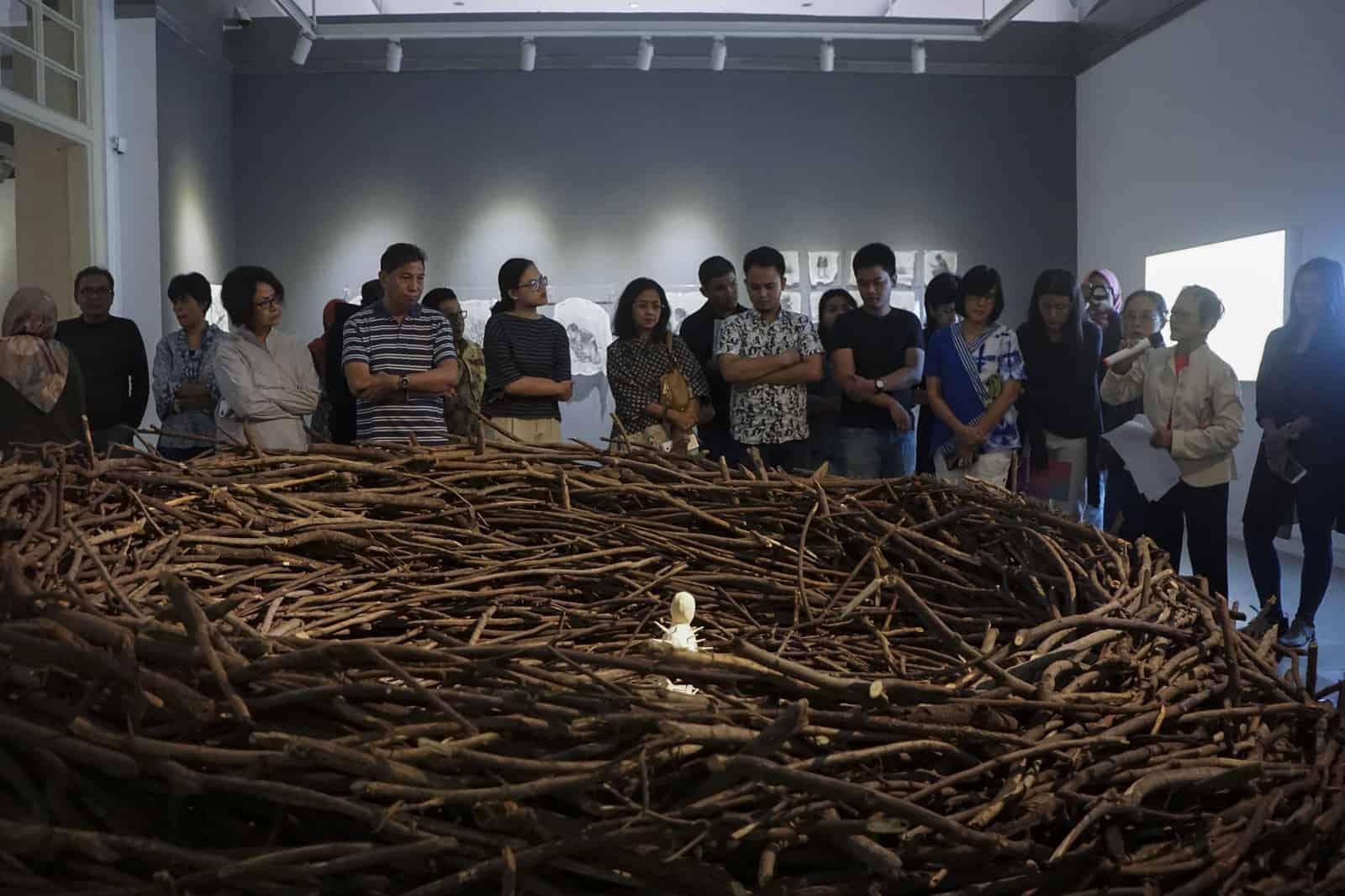
Nonetheless, heated questions remain: Is it necessary to keep singling out women artists? And, does Indonesia really need this book?
The answer is unequivocally, and absolutely yes, yes and yes.
Bianpoen’s book reveals pressing issues of gender discrimination within the art world that are so subtle, that they are perhaps hard to see. We are reminded that the language of art discourse, perception and taste, as well as the canon with which we analyze works is historically heteronormative and male-dominated. Think for example, about the historic impact of the male gaze. Furthermore, women artists, when placed in the context of a male-majority exhibition, are often oversimplified, softened, and placed in a subordinate category—or worse, made out to be angry feminists.
In an effort to combat this age-old system for analyzing art, Bianpoen strikes precisely and firmly, bringing us to the core of gender inequality within the Indonesian art ecosystem. The short essays in the book speak to a larger concern about an imbalance of opportunity for women in science, art, and technology—and accordingly, the social systems which discourage women from entering these fields.
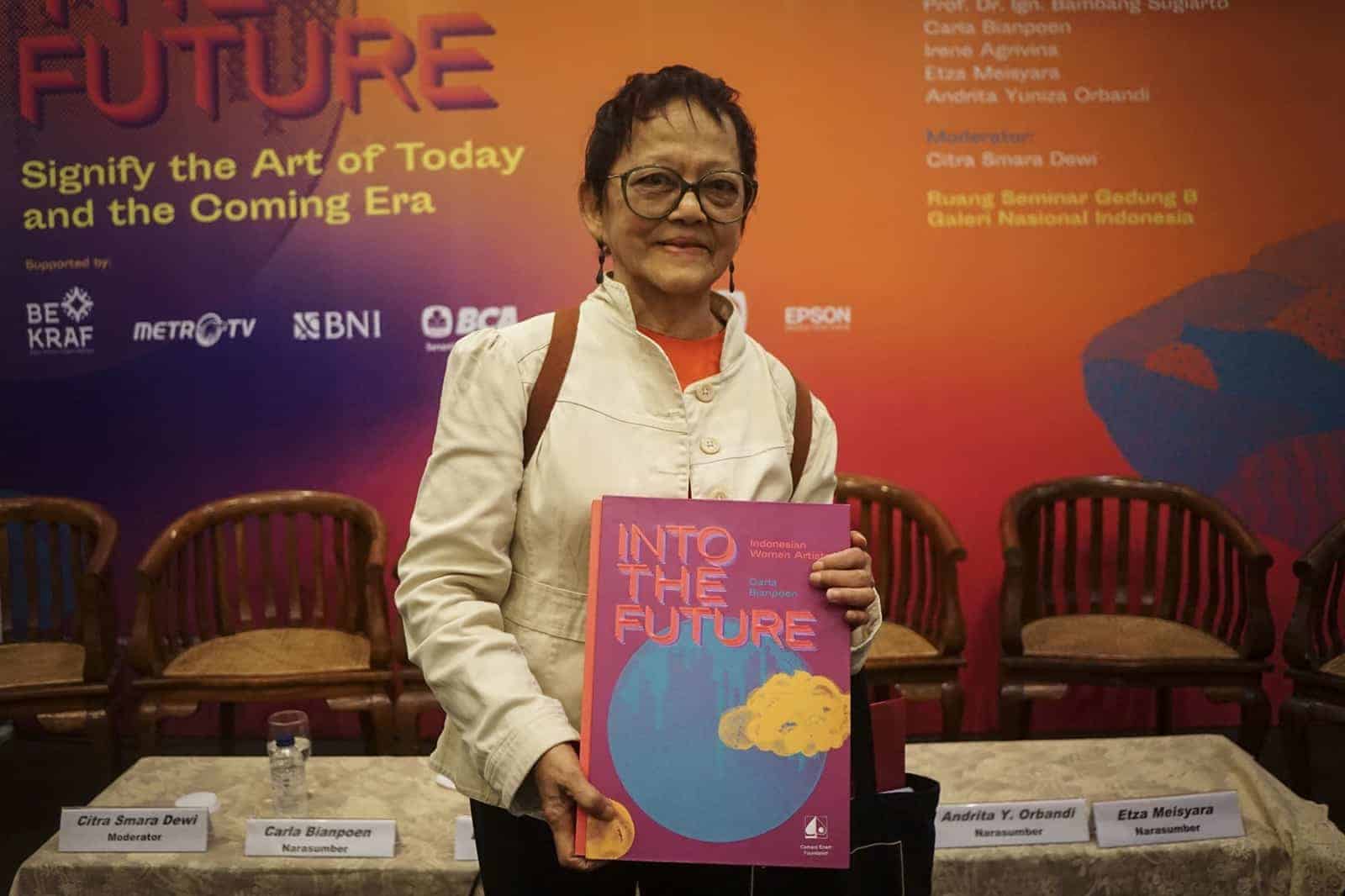
This book works hard to give a voice to each of the twenty-one artists featured—detailing their respective backgrounds, achievements, most recent projects, limitations, and failures as women in a male-dominated art world. More importantly, this book offers and extends a hand to create a much larger network of women artists. Buttressed by the collaborations and exchanges in which they have engaged, these women have successfully created their own art world.
So, as long as the global #metoo movement and the Women’s March continue to persist—and as long as women in Indonesia need a creamy-rose-coloured Transjakarta bus to move around in, as well as their own art world—so too do we need this book.






